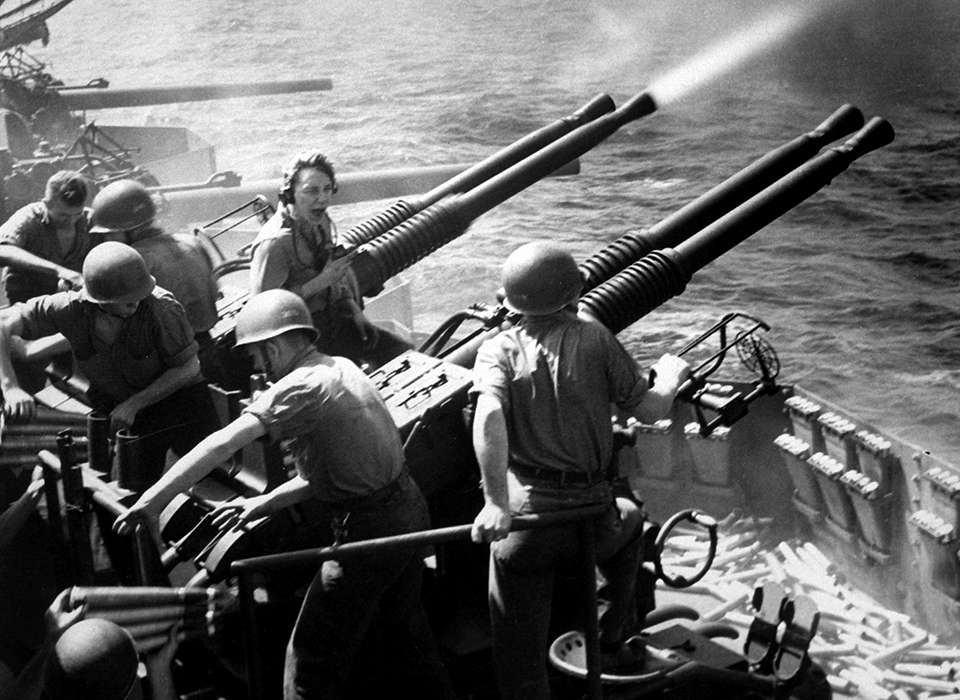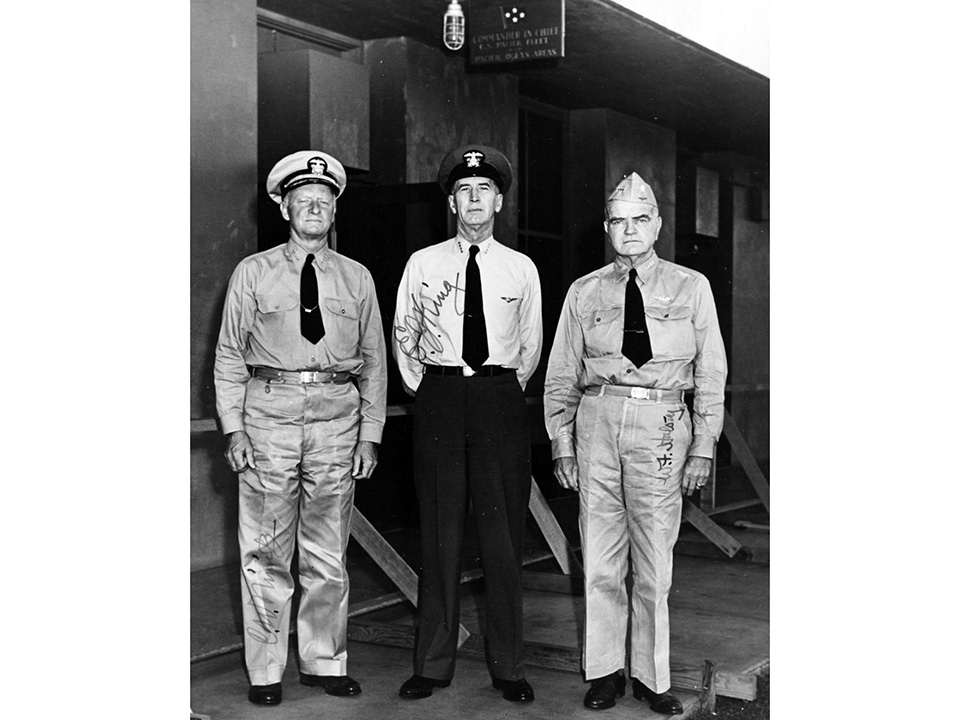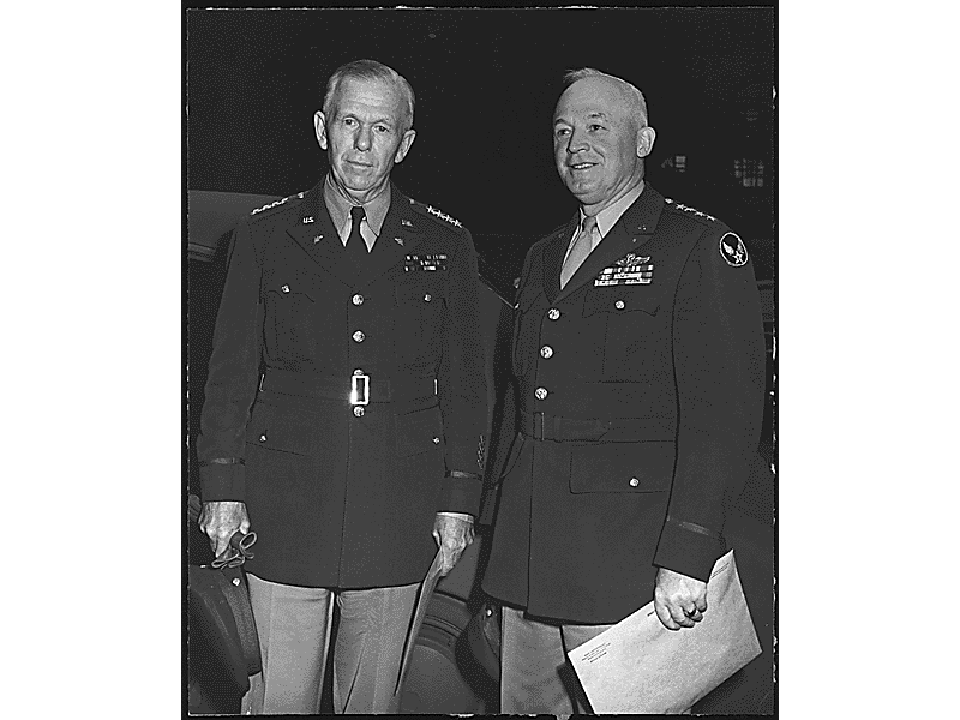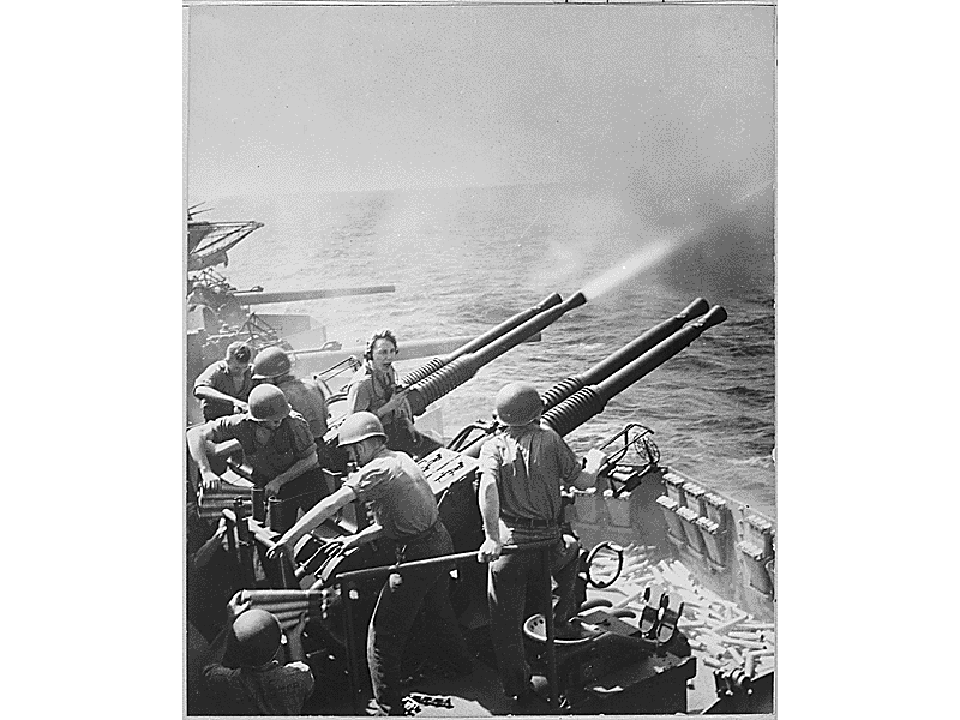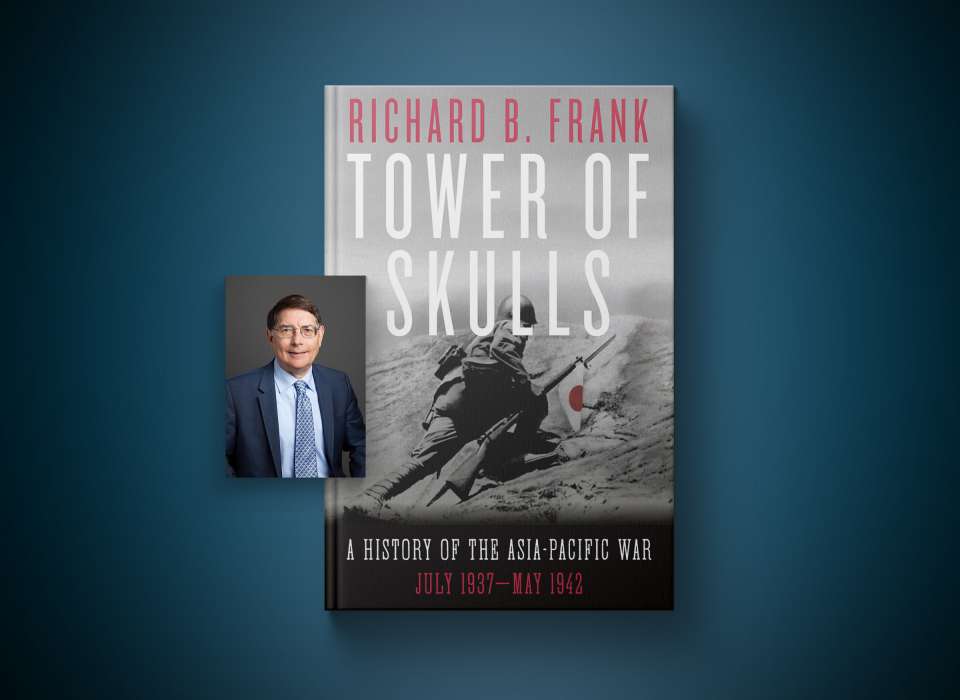In January 1943 President Franklin D. Roosevelt publicly fixed the American war aim for the “Unconditional Surrender” of the Axis Powers. When the Joint Chiefs of Staff (JCS) sought to devise a military strategy to achieve this goal, they sharply divided over what was ultimately a political question: what strategy would not collapse the will of the American people to see the war through to unconditional surrender?
Admiral Ernest J. King, Admiral Chester W. Nimitz, and Commander William F. Halsey, Jr., 1943. Image courtesy of the Naval History and Heritage Command.
The Navy, led by Fleet Admiral Ernest J. King, had worked for decades on a war with Japan. This analysis forged a fundamental principle that an invasion of the Japanese Home Islands was folly because it would produce politically unacceptable casualties. But the Army led by General of the Army George C. Marshall believed the critical element was time. A protracted war would squander public support. Therefore, the Army advocated an invasion of the Japanese Home Islands as the swiftest path to concluding the war.
The JCS reached a highly unstable compromise merging these two strategies in April 1945. The ongoing Navy-preferred strategy of blockade (and air and sea bombardment) would continue at greater intensity until November 1945. It then would be joined by the army vision: a two-phase initial invasion of Japan (Operation DOWNFALL) aimed first at southern Kyushu about 1 November (Operations OLYMPIC) and second at the Tokyo region about 1 March 1946 (Operation CORONET).
The JCS identified two profound challenges to achieving unconditional surrender. First, no Japanese government had surrendered to a foreign power in Japan’s history—by Japanese count a span of 2,600 years. Second, no Japanese military unit had surrendered in the entire course of the war. Therefore, the JCS concluded that there was no certainty the United States could obtain the surrender of a Japanese government and even if it did, that Japan’s armed forces would comply with the surrender order. Thus, the JCS defined the ultimate American nightmare as not “the invasion of Japan,” but the even more dreaded prospect that there would be no organized capitulation of Japan’s government and armed forces.
In June 1945, President Harry S. Truman reviewed the DOWNFALL plan during the costly campaign on Okinawa that he saw as a preview of the invasion of Japan. Truman was asked to approve both phases of DOWNFALL, but he gave reluctant assent only to OLYMPIC.
Then, in a story concealed by secrecy for four decades, communications intelligence rocked the American leadership. Far from attacking Kyushu with overwhelming superiority, suddenly it appeared the Japanese would outnumber the assault force for OLYMPIC.
As one senior intelligence officer phrased it, the assault would be going in at a ratio of one to one with the Japanese, and “this is no recipe for victory”—it was a recipe for a bloodbath.
The intelligence revelations were a godsend to Admiral King who was always determined to prevent an invasion of Japan in accord with longstanding navy convictions. King had advised his JCS colleagues in April that he only assented to issuing a preparatory order for OLYMPIC to ready the invasion option by November. But he pointedly added they would come back in August or September to reexamine whether an invasion was necessary. He also knew the senior Naval officer in the Pacific, Fleet Admiral Chester Nimitz, at the end of May had privately informed King that he could no longer support any invasion of Japan based on the Okinawa experience. So, with the horrible intelligence picture for OLYMPIC in hand, King initiated a convulsive confrontation with the Army on August 9, 1945, the day Nagasaki was bombed, to cancel OLYMPIC. Only the Japanese surrender five days later halted this clash. The secrecy surrounding communications intelligence would prevent public understanding for decades that the planned November 1945 invasion of Japan was shaping up as unthinkable.
King’s alternative strategy was the Navy’s long preferred one of blockade. It was the most ruthless strategy Americans contemplated in 1945. The blockade explicitly aimed to cut off food supplies and kill millions of Japanese, mostly civilians, from starvation. Atomic weapons then available lacked the power or numbers to kill by measures more than thousands. Critics of how the war ended quote statements by Naval officers that the war could have been ended without atomic bombs. What the critics do not disclose is that this alternate means to end the war aimed to kill Japanese by the millions. Most prominently, Truman’s chief of staff, Fleet Admiral William Leahy, post war would condemn atomic weapons as barbaric, though the only documented comment he ever made to Truman during the war was that the atomic bombs would not work. There is no record Leahy ever challenged the use of blockade.
As awful as were the implications of blockade, it was only at the top of a longer list of horrifying options.
Meet the Author
Richard B. Frank is an internationally renowned expert on the Pacific war. After graduating from the University of Missouri, he was commissioned in the US Army, in which he served for nearly four years, including a tour of duty in the Republic of Vietnam as an aero rifle platoon leader with the 101st Airborne Division.
Frank completed studies at Georgetown University Law Center in Washington, DC. Soon afterwards he began research on his first book, Guadalcanal: The Definitive Account of the Landmark Battle, which was published in 1990 and won the US Marine Corps’ General Wallace M. Greene Award.
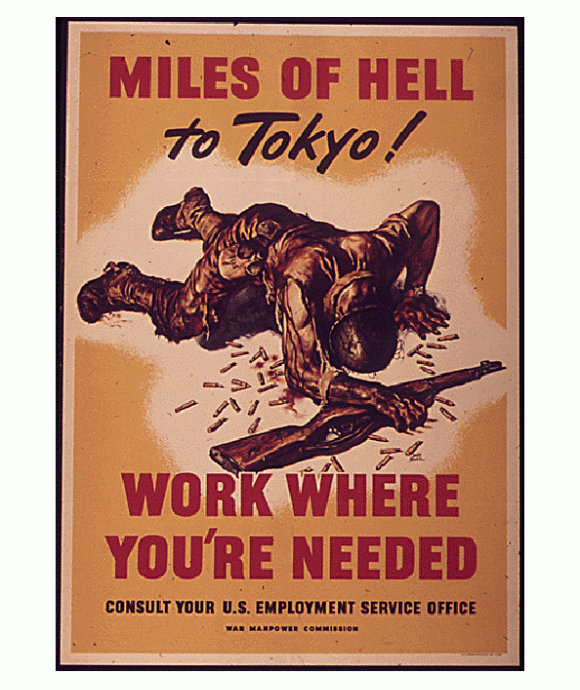
There Are No Civilians in Japan
Allied military planners faced a bitter truth as they planned for a possible invasion of Japan: there were no distinctions between soldiers and civilians.
This article is part of an ongoing series commemorating the 75th anniversary of the end of World War II made possible by Bank of America.
Cite this article:
MLA Citation:
APA Citation:
Chicago Style Citation:
